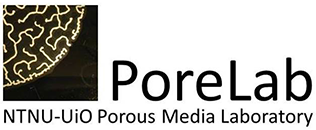Who: Nathan Abitbol, PhD candidate in FAST Laboratory (Fluides, Automatique et Systèmes Thermiques) at the Université Paris-Saclay, France
When: Wednesday April 23 at 13:00 CET (Norway time).
Where: The lecture will be in-person in the common room (PoreLab Trondheim) and will be streamed in the Kelvin room (PoreLab Oslo). From anywhere else, you will be able to join via the following Zoom link:
Https://uio.zoom.us/j/65837085049?pwd=WjZianUyN3FJa2liQkxBbzQrOCtGdz09
Title: Flow of a yield-stress fluid in a percolation network
Abstract:
Understanding the flow of complex fluids in heterogeneous media with strong disorder is an important area of research in various fields of science, and are present in a number of industrial processes. Yield-stress fluids in particular, which are materials that require a stress above a threshold value to flow, exhibit a range of interesting phenomena when flowing in porous media, the major difference with Newtonian fluids being that a critical pressure threshold appears below which the flow rate in the medium is zero. Applications can be found for example when injecting foams in soils in order to stop the propagation of pollutants.
In this lecture, we will present results on flows of yield-stress fluid in a pore- network model, a simplified representation of a porous medium. A fraction of its links are cut, similarly to a bond percolation process. This can model for example imbibition where the non-wetting fluid gets stuck inside the largest pores, or more generally a porous media with obstacles blocking it’s pore throats.
Our work is focused on two aspects : We first set out to understand the scaling properties and finite-size effects of the critical pressure threshold. We then quantify the different flowing regimes and present the influence of cutting links in the network on the scaling laws of macroscopic quantities of interest, namely the effective permeability and the apparent pressure. We have shown that at the percolation threshold, these quantities present scale-free behaviors with known percolation critical exponents, and that the flow is entirely controlled by the geometry of its flowing paths.
